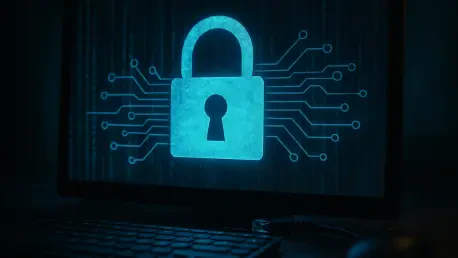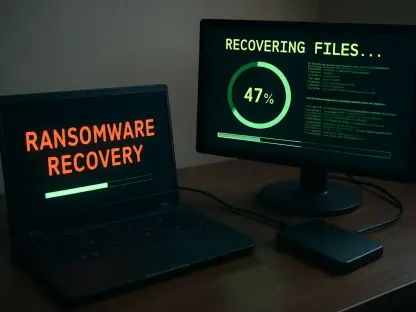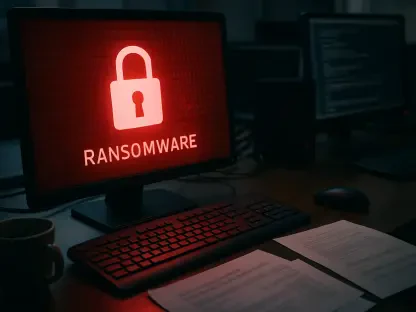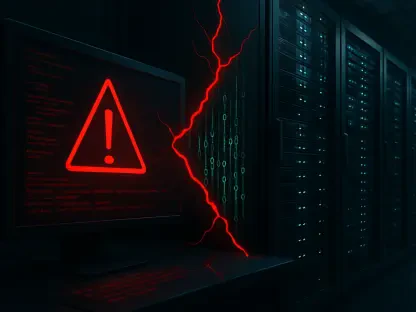In an era where cyber threats evolve at a relentless pace, organizations often turn to compliance frameworks as a foundational shield against attacks, believing that meeting regulatory standards equates to robust security. These frameworks, grounded in research and best practices, offer structured guidelines and a way to demonstrate accountability to auditors and stakeholders. However, a stark reality persists: passing a compliance audit does not guarantee protection against breaches. Many businesses have discovered this the hard way, achieving full compliance only to suffer significant data leaks shortly after. While these standards provide a critical starting point, they cannot be the sole pillar of a cybersecurity strategy. Relying exclusively on compliance often leaves gaps that sophisticated attackers are quick to exploit. This discussion explores why ticking the compliance boxes falls short of true security and what steps can be taken to build a more resilient defense against the ever-changing landscape of cyber risks.
1. Understanding the Limits of Compliance Frameworks
Compliance frameworks are undeniably valuable, offering a baseline for organizations to establish cybersecurity measures and meet industry or governmental standards. They provide a structured approach to identifying risks, implementing controls, and ensuring accountability through regular audits. Yet, a critical flaw exists in assuming that compliance equates to safety. Many organizations have passed audits with exemplary scores, only to face devastating breaches due to unaddressed vulnerabilities. The reactive nature of these frameworks means they are often built on historical data and past incidents, struggling to anticipate or counter the latest attack methods. As cyber threats evolve daily, the lag in updating standards can leave businesses exposed to new exploits that compliance does not cover. This disconnect highlights a fundamental issue: while frameworks are essential for establishing minimum requirements, they cannot adapt quickly enough to the dynamic nature of modern cybercrime, leaving organizations at risk.
Moreover, the generalized design of compliance frameworks fails to address the specific threats faced by different industries or individual businesses. A financial institution, for instance, encounters risks distinct from those of a healthcare provider or an online retailer, yet all may adhere to the same broad standards. This one-size-fits-all approach often overlooks unique vulnerabilities inherent to a company’s operations or sector. When security efforts focus solely on meeting generic criteria, critical risks specific to the organization’s environment can be ignored. Additionally, a checkbox mentality—prioritizing audit preparation over actual protection—can lead to controls that look effective on paper but fail in practice. Teams may spend more time documenting processes than testing their real-world effectiveness, creating a false sense of security. This gap between appearance and reality is precisely what attackers exploit, underscoring the need for a more tailored and proactive approach beyond standard compliance.
2. Dissecting the Gap Between Compliance and Security
The distinction between being compliant and being secure is stark, and failing to recognize this can have catastrophic consequences for organizations. Compliance often involves meeting a set of predefined regulations or standards at a specific point in time, as verified by audits. However, these audits merely confirm the existence of controls, not their effectiveness against active threats. A notable example is the 2024 AT&T data breach, which affected 110 million customers through a compromised cloud provider, exposing how vulnerabilities in the supply chain can bypass compliance measures. An audit might verify that password complexity rules are in place, but it won’t reveal whether those passwords have already been leaked and are circulating in attacker databases. This snapshot approach to security assessment leaves organizations blind to ongoing risks, as compliance does not account for the continuous evolution of cyber threats or the real-time status of defenses.
Furthermore, compliance often fosters a static mindset, where security is treated as a periodic obligation rather than a persistent priority. Audits provide momentary assurance, but they do not test whether controls can withstand sophisticated attacks or adapt to new vulnerabilities. For instance, while a business might comply with data protection regulations, it could still fall victim to phishing schemes or insider threats that exploit human error—areas often outside the scope of standard frameworks. The AT&T incident serves as a reminder that even compliant systems can harbor weak links, especially when third-party providers are involved. True security demands ongoing vigilance and a deeper understanding of an organization’s unique threat landscape, rather than relying on a one-time validation of controls. Bridging this gap requires shifting focus from merely meeting requirements to actively preventing breaches through dynamic and comprehensive strategies.
3. Adopting a Proactive and Continuous Security Mindset
To move beyond the limitations of compliance, organizations must embrace a mindset of continuous security, treating protection as an ongoing process rather than a one-time achievement. This approach involves proactively identifying and mitigating risks before they escalate into breaches. Instead of waiting for an incident to expose weaknesses, businesses should continuously monitor for compromised credentials and scan for inadequate passwords, even if they meet policy guidelines. Implementing real-time threat detection systems is crucial, operating under the assumption that attackers are already probing for vulnerabilities. This shift in perspective ensures that defenses remain agile and responsive, addressing threats as they emerge rather than reacting after damage is done. By prioritizing preemptive measures, organizations can significantly reduce the likelihood of successful attacks, building a more robust security posture that compliance alone cannot provide.
Additionally, a continuous security mindset requires tailoring defenses to protect the most critical assets within an organization. Not all accounts or systems carry the same level of risk, so applying uniform controls is inefficient and often inadequate. Identifying high-value targets—such as accounts with access to financial systems or sensitive customer data—and enforcing stricter measures like longer passwords or multi-factor authentication is essential. Security programs should reflect the specific risk profile of the business, rather than adhering solely to generic framework baselines. Staying ahead also means integrating threat intelligence into operations, allowing defenses to adapt immediately when new attack techniques or breach databases surface. Waiting for the next audit cycle to update protections is far too slow in today’s fast-paced threat environment. This adaptive approach ensures that security evolves in tandem with emerging risks, offering a level of protection that static compliance cannot match.
4. Implementing Practical Steps to Strengthen Defenses
Beyond adopting a new mindset, organizations must take actionable steps to enhance their security posture and address the shortcomings of compliance. One critical measure is detecting breached credentials before attackers can exploit them. Real-time scanning of user passwords against known breach databases is vital, and immediate resets should be enforced for any compromised credentials, regardless of whether they comply with complexity rules. This proactive step prevents attackers from using stolen data to gain unauthorized access, closing a common entry point for breaches. Additionally, ongoing monitoring ensures that even as new breach lists are published, the organization remains protected against credentials that may have been exposed. Such measures go beyond the static checks of compliance audits, focusing on real-time prevention and reducing the window of opportunity for cybercriminals to strike.
Another essential action is enforcing adaptive password policies tailored to the risk level of different accounts. High-risk roles, such as domain administrators or executives, should face stricter requirements—like longer passwords or dynamic rules based on access patterns—compared to standard users. This tiered approach ensures that the most sensitive areas of the organization receive heightened protection, aligning security with actual risk rather than applying blanket policies. Furthermore, conducting regular assessments to validate defenses is crucial. Unlike compliance reviews, these evaluations should test controls against real-world attack scenarios, tracking metrics like credential compromise rates and ensuring protections match current threats. Scheduling consistent reviews of the security stance—not just compliance status—helps identify gaps before they are exploited. These practical steps collectively build a defense system that prioritizes effectiveness over mere documentation, offering a stronger shield against cyber threats.
5. Building Resilience Beyond Regulatory Standards
Recognizing that compliance is a necessary but insufficient component of cybersecurity is the first step toward genuine protection. Depending on the industry, adhering to regulations may be mandatory, yet it should never be mistaken for comprehensive security. True resilience comes from asking what additional measures can be taken to fortify defenses against evolving threats. Human error often represents the weakest link in any security chain, with mistakes like password reuse or selecting compromised credentials creating vulnerabilities. Implementing controls that safeguard users from these predictable lapses is critical. Tools designed to enhance password security can play a pivotal role by offering real-time protection and advanced policy options, ensuring that even compliant credentials are not exploitable if they appear in breach databases. Such solutions provide a practical way to address human vulnerabilities that compliance frameworks often overlook.
Moreover, achieving security excellence means integrating specialized tools to bridge the gap between meeting minimum standards and preventing breaches. Solutions that continuously scan billions of compromised passwords and block weak ones—even if they technically meet complexity rules—add a layer of defense that static audits cannot replicate. Customizable controls tailored to an organization’s unique needs further enhance this protection, ensuring that security aligns with specific risks. Ultimately, while passing an audit holds importance for regulatory and stakeholder purposes, the real priority lies in stopping attackers before they can cause harm. Exploring advanced security tools through live demonstrations can reveal the tangible difference between merely complying and actively securing an environment. This commitment to going beyond the basics reflects a dedication to safeguarding data, systems, and trust in an increasingly hostile digital landscape.









